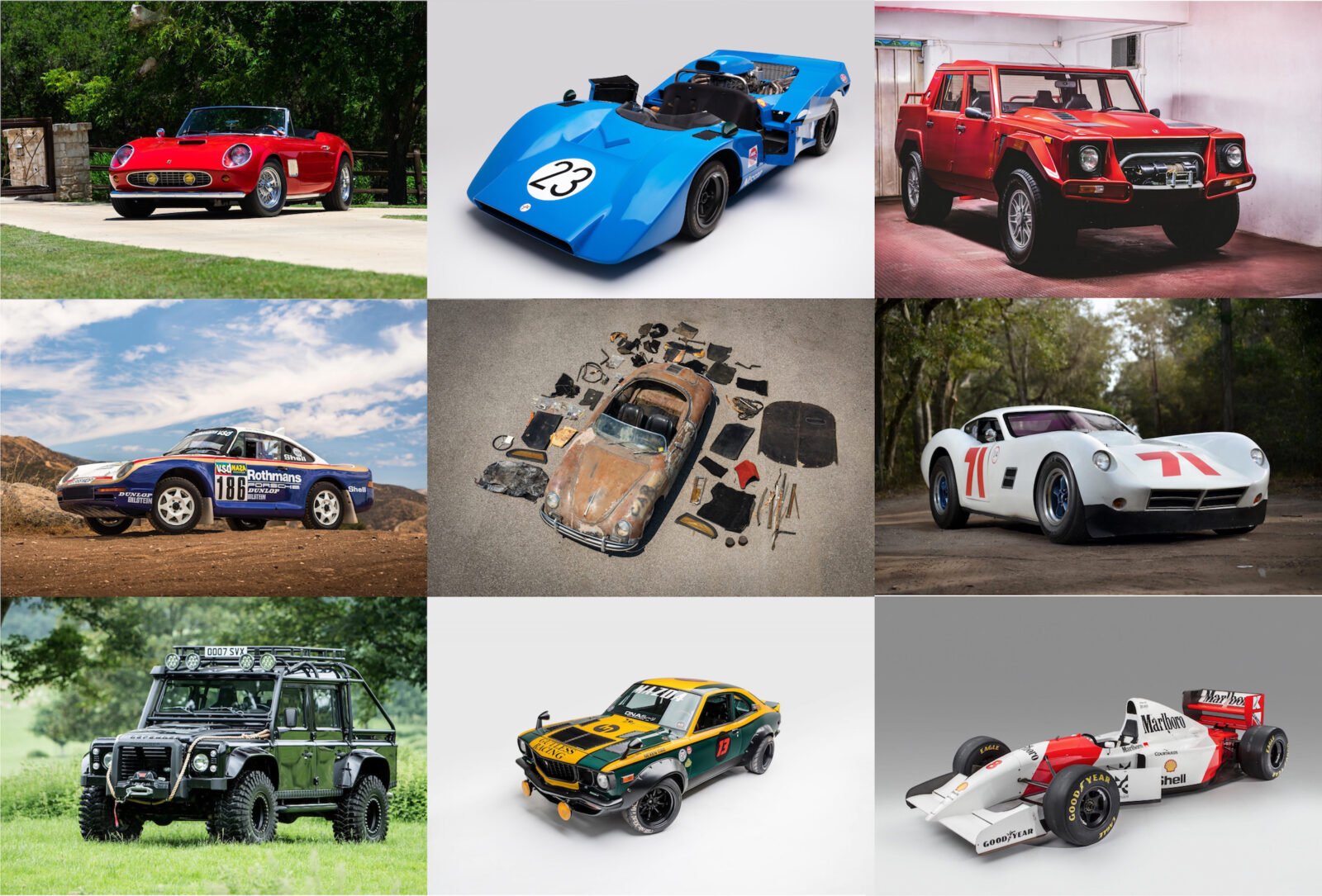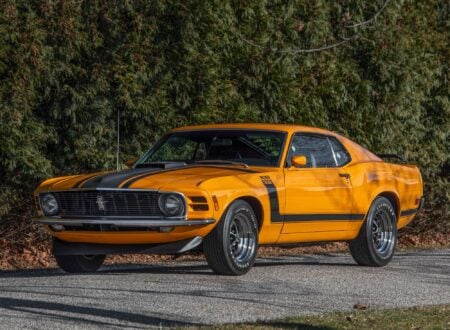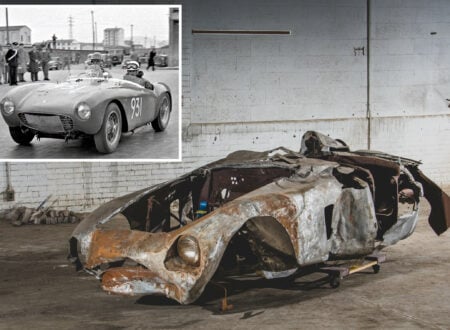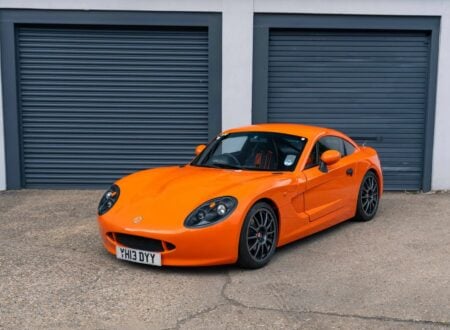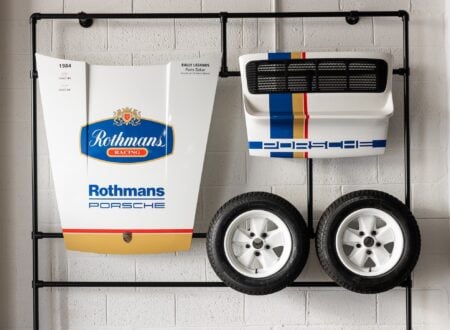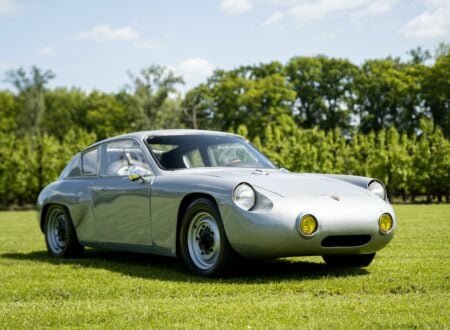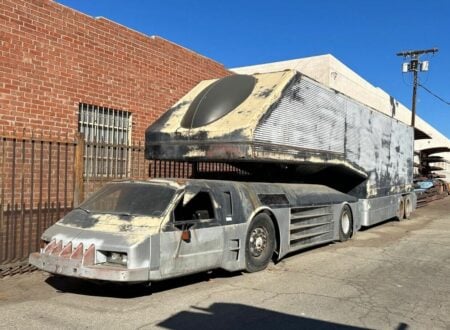This is our annual collection of the most popular cars on Silodrome for the year – this list is compiled in reverse order based on which automobiles got the most visits on Silodrome over the past 12 months.
There are more than a few surprises on the list, there are a few vehicles missing that I would have expected to be here, and there are a couple that are sure to be controversial – but these are the most popular 18 of 2018.
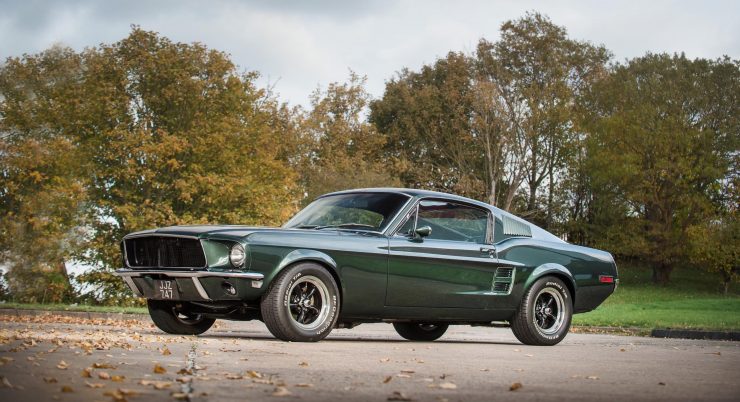
#18 – BULLITT SPECIFICATION – HIGHLAND GREEN FORD MUSTANG FASTBACK
The Ford Mustang driven by Steve McQueen in the 1968 cult classic “Bullitt”, now known as the Bullitt Mustang, has become one of the most memorable and iconic cinema cars of the 20th century.
The car you see here is a creation very closely inspired by the film, it’s become popular in recent years for people to build their own Bullitt-specification Mustangs using either 1967 or 1968 cars due to the close similarity between the two model years when compared with the earlier and later cars. Purists will tell you that only 1968 cars count, but they’ll always find something to have a gripe about.
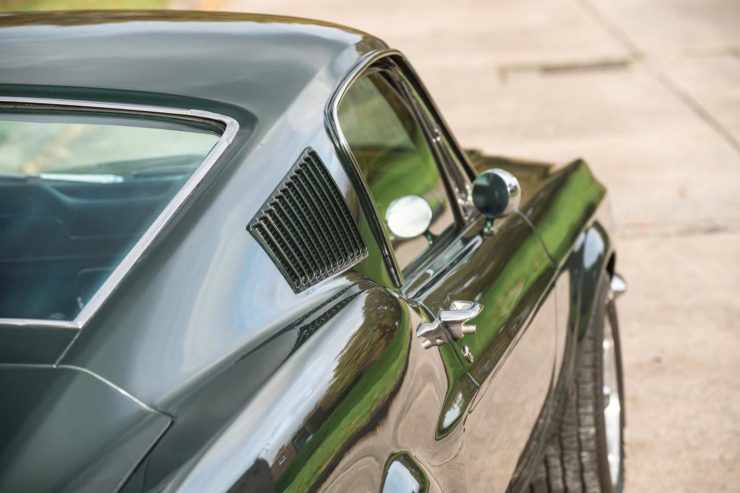
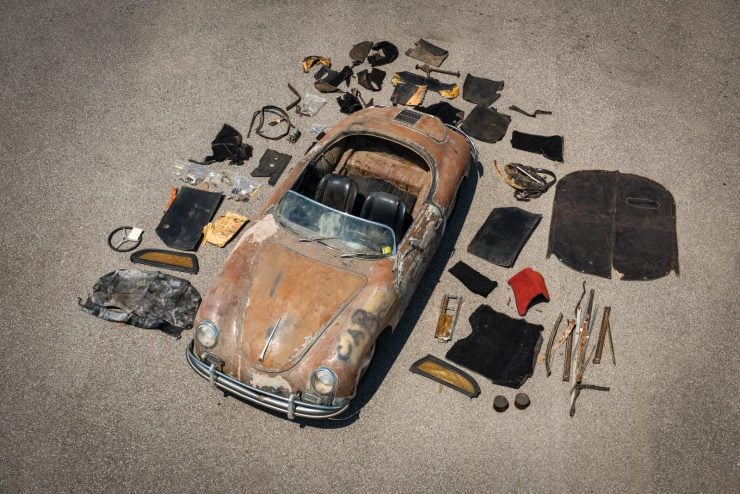
#17 – PORSCHE 356A 1600 SUPER SPEEDSTER
The Porsche 356A 1600 Super Speedster wasn’t originally designed to be an expensive car, in fact it was specifically designed to be as inexpensive as possible while still being profitable to build and sell.
The car you see here is an ideal restoration candidate still fitted with its original 1600 “Super” engine, capable of 75 hp once restored and refitted.
A Doctor bought this Speedster in rough condition in 1984 intending to restore it, the project remained largely untouched for forty years, and it’s now being offered for sale. Though the sheet metal appears largely salvageable the car will likely need new floor pans, a trunk floor, and a battery box, though a specialist restoration shop won’t find this particularly challenging.
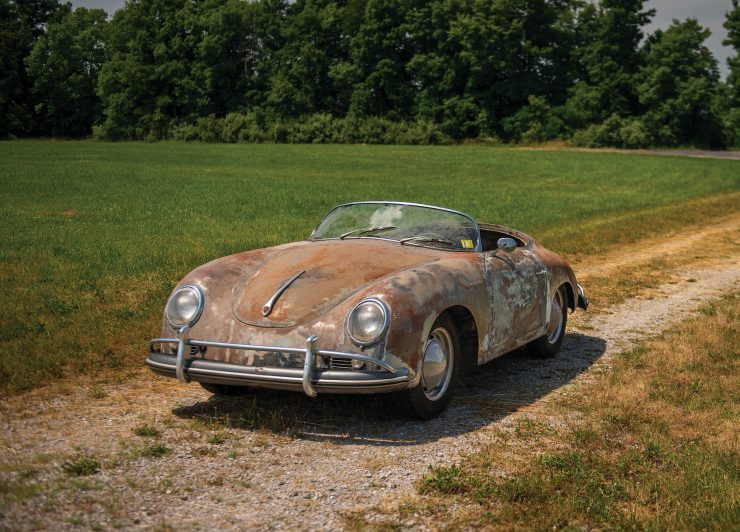
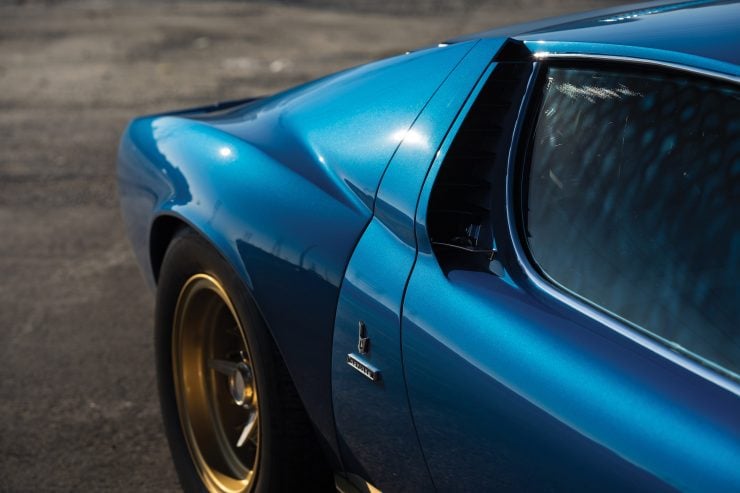
#16 – LAMBORGHINI MIURA P400 SV
The Lamborghini Miura P400 SV was the third, final, and fastest major iteration of the world’s first supercar.
The Miura was a design and engineering revelation when it was first shown to the public at the 1966 Geneva Motor Show, the chassis had been shown a year before at the 1965 show in Turin where it had captured headlines – but it would be the impossibly beautiful body penned by Marcello Gandini that would set the motoring world alight, and flip open hundreds of checkbooks.
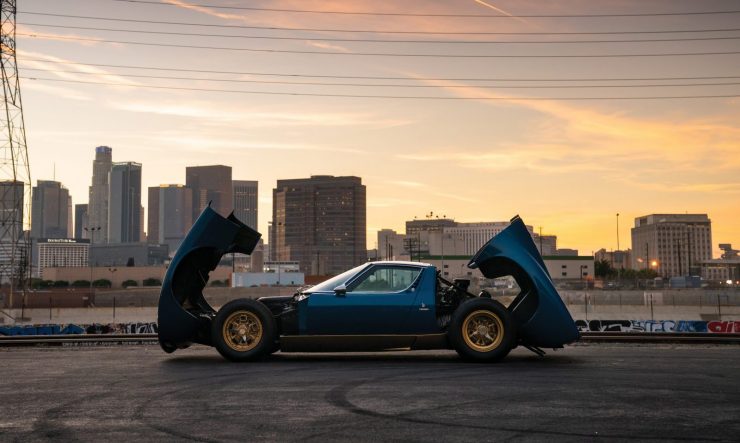
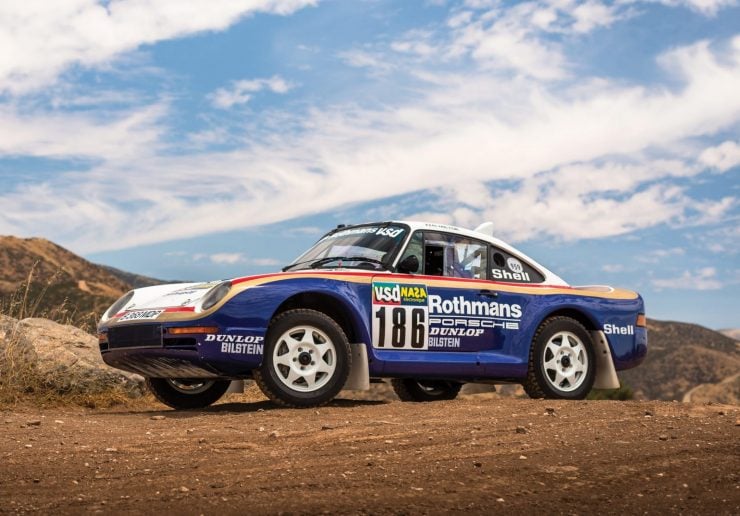
#15 – AN ORIGINAL PORSCHE 959 PARIS-DAKAR RACER
The Porsche 959 is remembered a technological tour de force that forever changed the direction of supercar engineering, but in a wonderful twist of fate this pristine supercar was modified for rally, and sent off to compete in the world’s toughest race – the Paris-Dakar.
In all just 6 Paris-Dakar specification 959s were built, and they almost never come up for sale. As a result of this they’ve become almost mythical creatures to the global car community. RM Sotheby’s will be offering the car shown here, currently the property of none other than Jacky Ickx, at their Porsche 70th Anniversary Sale in Atlanta on the 27th of October.
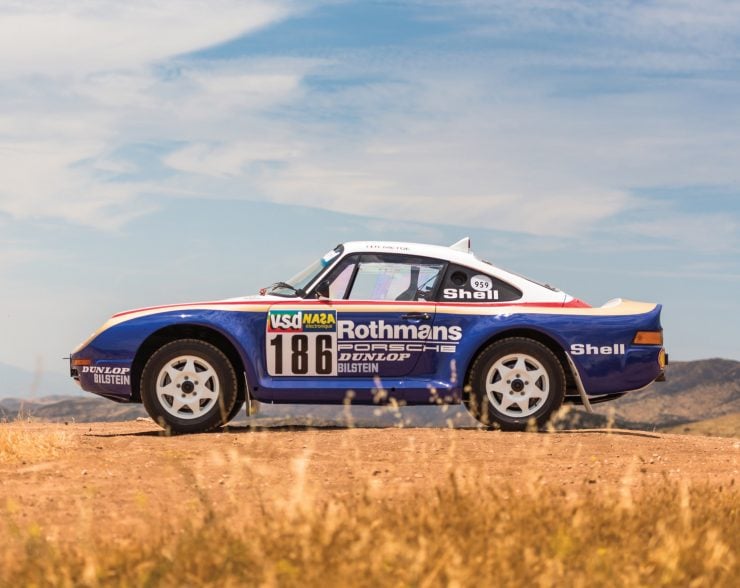
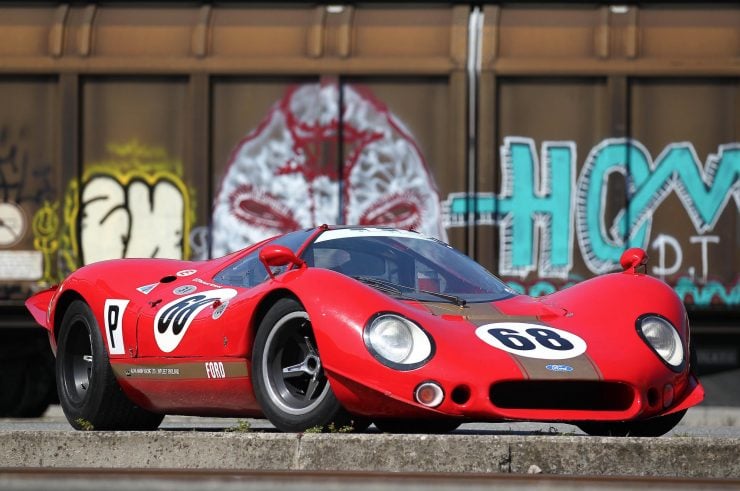
#14 – 1968-69-TYPE FORD P68 “F3L” PROTOTYPE RACING CAR
The Ford P68, otherwise known as the F3L for “Ford 3 Litre”, is a sports prototype racing car that should probably be just as famous as the Ford GT40 that preceded it.
It was essentially a closed-wheel, two-seat Formula 1 car powered by the then-new and unproven Ford-Cosworth DFV V8 Formula 1 engine.
The project to develop the Ford P68 was done without the deep pockets of Ford America, who had exited the world of prototype sports car racing at the end of 1967. This left teams running the proven Ford GT40 as privateers, but the development by Ford Europe and Cosworth of what would become the most successful Formula 1 engine of all time opened a new door.
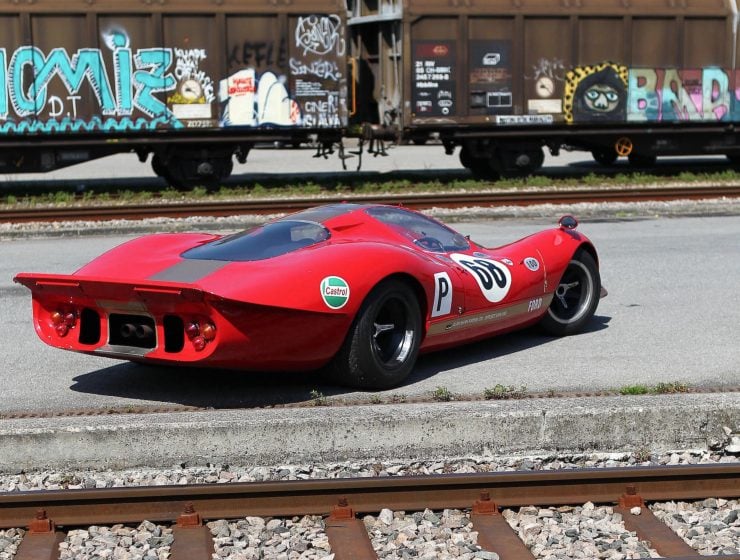
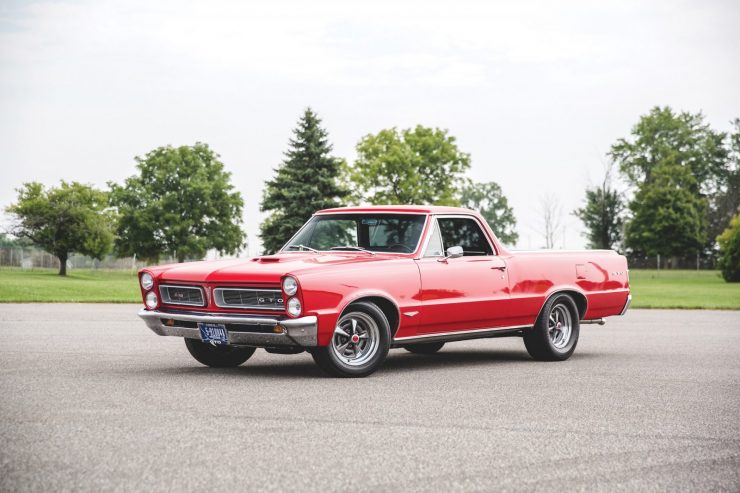
#13 – THE ONLY ONE IN THE WORLD – A PONTIAC GTO CHIEF CAMINO
The 1965 Pontiac GTO Chief Camino is a one-off vehicle that should almost certainly have been built and offered for sale by Pontiac in the mid-1960s.
It never was, but this is probably due to the fact that there’s no indication Pontiac even considered building it.
The car you see here wasn’t built by them, it was built as a prototype by a man named Ron in his garage over a period of 10 years – using an original Pontiac GTO as the starting point.
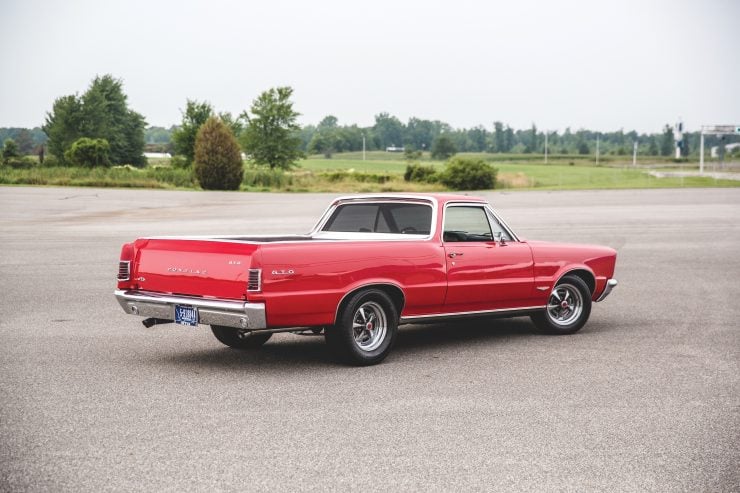
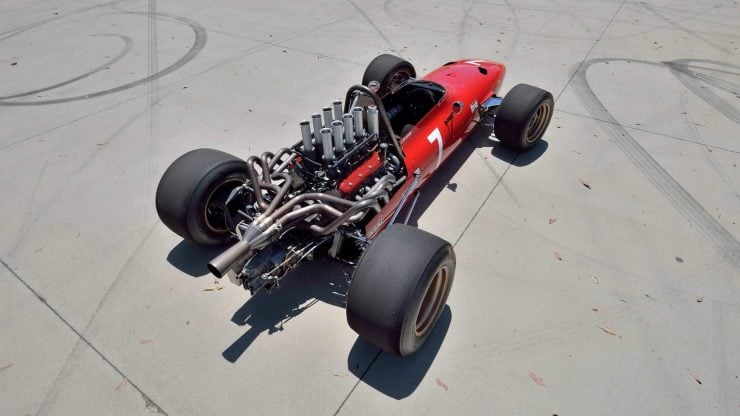
#12 – THE 425 HP SCARBO SVF1 PROTOTYPE IS FOR SALE
Although the Scarbo SVF1 Prototype looks like a ’60s Formula 1 car, it’s actually an entirely modern creation, fitted with a 425 hp GM Performance all-aluminum LS1 6.2 litre V8 and weighing in at a feather-light 1,280 pounds.
The car is the work of Joe Scarbo, a California State Polytechnic University mechanical engineer and racing aficionado, with a deep love of 1960s-era Formula 1 cars as he explains:
“In the late 1960’s, Formula 1 gave birth to some of the most iconic vehicles ever made. The cars were extremely light, had recently been re-formatted with mid-engined layouts for superior handling, engines were making power well beyond what the sport had ever seen, and tires were actually wide enough to put all of it to the ground.”
“Although on the brink, bodywork design had not yet been tainted by aerodynamic masterminds and the primary goal was streamlining for drag reduction. The result was an elegant form with a brutally raw mechanical components just beneath the skin.”
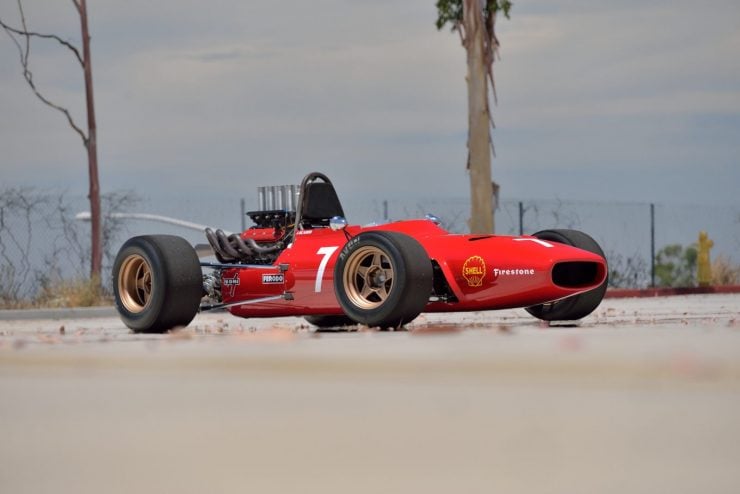
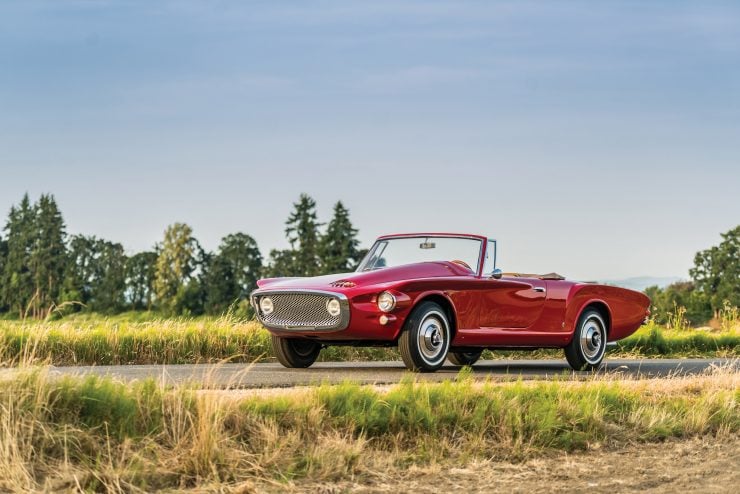
#11 – THE PLYMOUTH ASIMMETRICA ROADSTER
The Plymouth Asimmetrica Roadster was designed as a production car, despite its concept car looks – it was initially planned that 25 would be made, however just two were completed by the time production ceased.
The Asimmetrica was based on the futuristic Plymouth XNR that had been penned by one of the most important American automobile designers of the 20th century – Virgil Exner. The Plymouth XNR was co-developed with the Italian coachbuilding firm Ghia, the car’s name was a hat-tip to its designer – “XNR” sounds like “Exner” when said aloud.
Virgil Exner was the godfather of jet-age cars, a great proponent of fins and aerospace-inspired design, he would lead the charge from the 1940s into the 1950s, designing many of the most iconic cars of the time along the way.
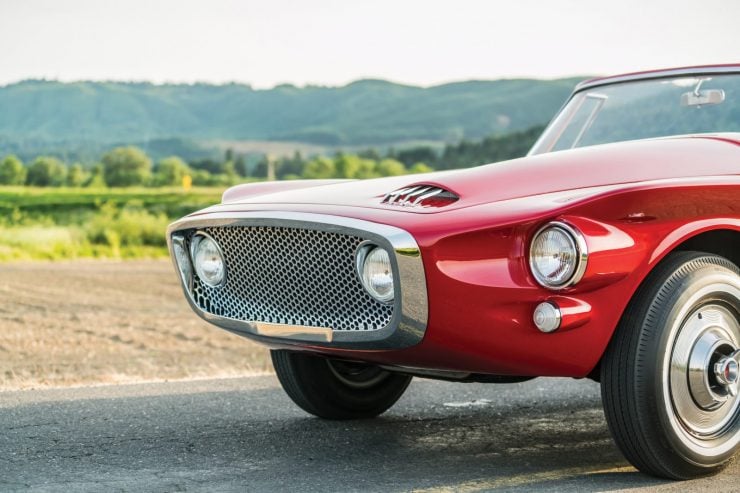
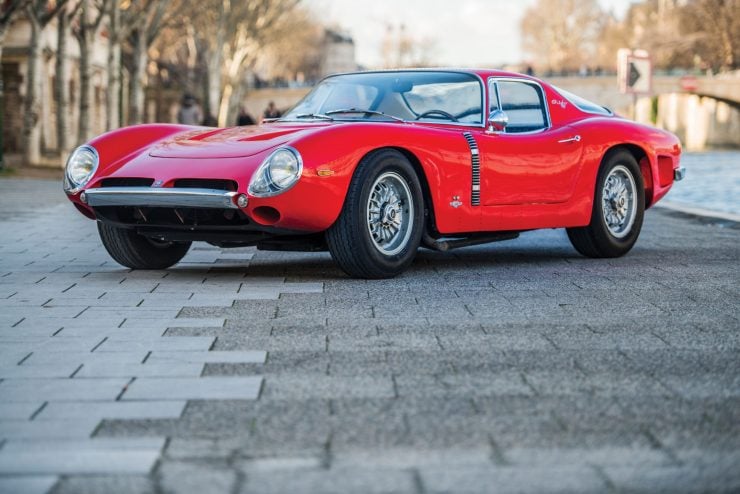
#10 – JOHNNY HALLYDAY’S 1965 ISO GRIFO A3/C
The Iso Grifo A3/C was developed by legendary Italian engineer and test driver Giotto Bizzarrini – the same man responsible for the creation of the Ferrari 250 GTO, now one of the most desirable and valuable cars in the world.
Many years later Bizzarrini explained his philosophy in developing the Iso Grifo A3/C to author Winston Goodfellow: “I started with the idea of Ferrari’s 250 GTO, and wanted to improve on it”. Much of Bizzarrini’s time in developing the Ferrari had been spent in a wind tunnel at Pisa University, this is where he shaped the low nose, long hood, fastback roofline, rear lip spoiler, and the Kammback tail.
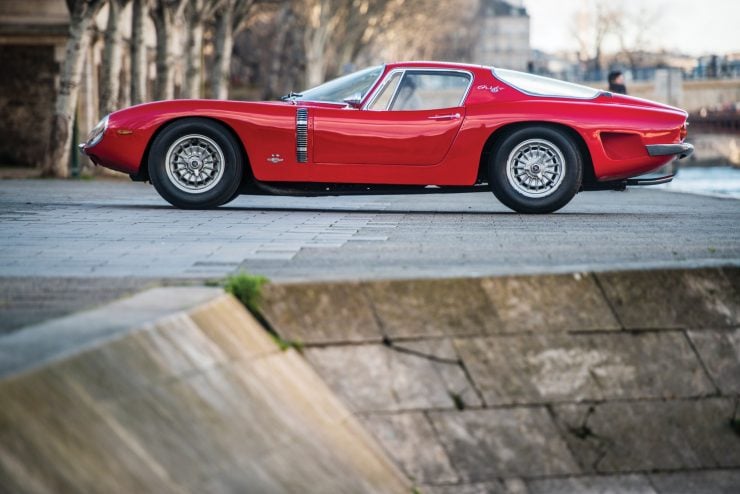

#9 – THE JAMES BOND “SPECTRE” LAND ROVER DEFENDER SVX
Vehicles used in James Bond films typically become almost as iconic as 007 himself, the most famous are the Astons of course, but he’s also given popularity boosts to the Lotus Esprit, a number of BMWs, the Toyota 2000 GT, the Sunbeam Alpine, and even a 1971 Ford Mustang Mach 1.
The most recent James Bond film brought 007 together with another iconic Brit – the Land Rover Defender. Sony Pictures knew they needed an intimidating 4×4 for a number of scenes in Spectre, so they turned to Jaguar Land Rover’s Special Vehicle Operations and ordered 10 vehicles. These 10 black 110 Series Defenders were then sent to Land Rover tuning and racing specialists Bowler who turned them into some of the meanest, and now most famous, Defenders on earth.

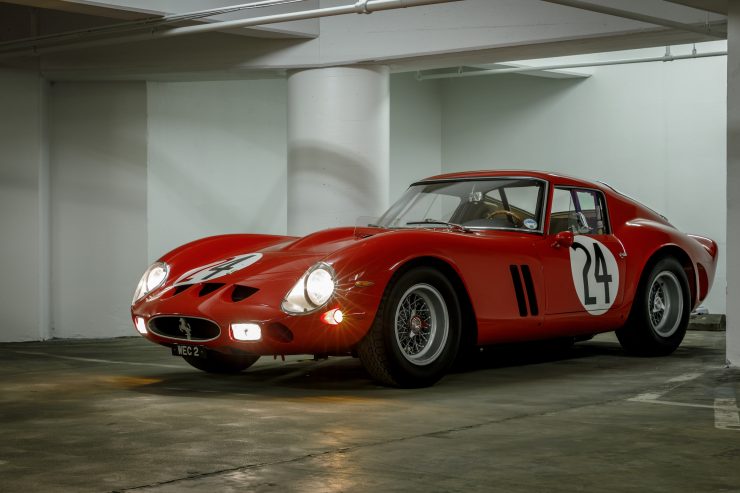
#8 – THE $70 MILLION DOLLAR FERRARI 250 GTO IN THE VAULT
The overwhelming majority of people driving down Wilshire Boulevard in Los Angeles have no idea that the unusual red and silver building they’re passing has a vault below ground level that contains well over $150 million USD worth of cars.
Remarkably, the vault at the Petersen is more valuable than the vault at the Bellagio or Caesar’s Palace on any given day, and unlike the vault at the Bellagio, you can get friendly private tours of the vault at the Petersen without having to resort to any of that Ocean’s 11 nonsense.
The car you see here is the most valuable car in the Petersen, it’s chassis #4293GT – a 1963 Ferrari 250 GTO that won its first race outing at the 1963 500 Kilometers of Spa, then took a class win at the 1963 24 Hours of Le Mans, a win at Zolder, and a class win at the 12 Hours of Reims, before leaving the world of competition behind and passing into private hands.
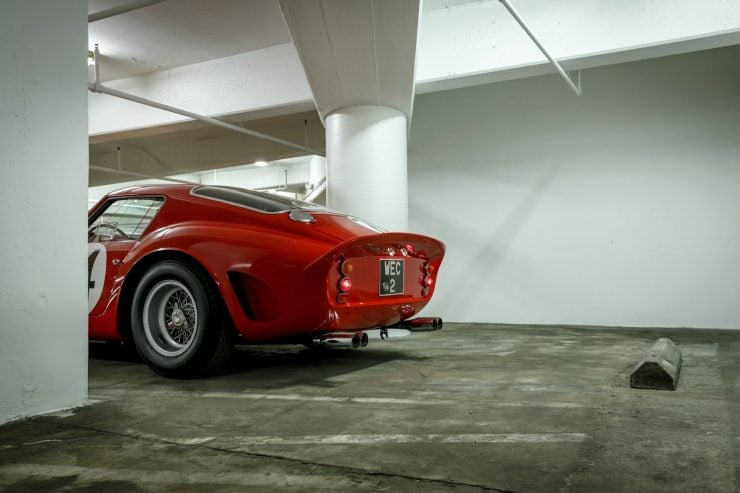
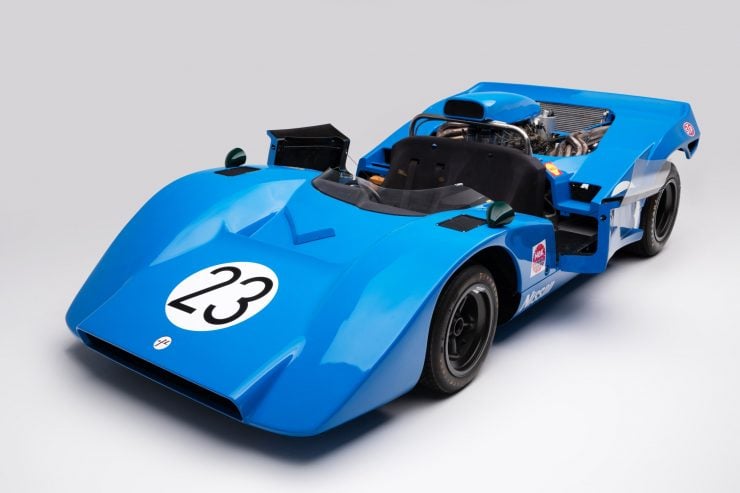
#7 – 1969 NISSAN R382 – A JAPANESE 6-LITRE V12 WITH 600 HP
The 1969 Nissan R382 is one of the most impressive Japanese race cars of the 1960s, it’s fitted with a mid-mounted 6 liter V12 capable of touching the 600 hp mark and despite the engine’s complexity, it proved remarkably reliable.
Fans of ’60s era Can-Am racing will likely see an immediate resemblance to the 1968 McLaren M8, and it’s almost certain that the orange McLarens of the Bruce and Denny show had no small influence on the design of the Nissan.
Unlike the shoestring-budget funded British-built McLarens, Nissan had developed their own engine after suffering the ignominy of needing to use an American Chevrolet V8 in the preceding 1968 Japanese racing season – fitted amidships in the Nissan R381.
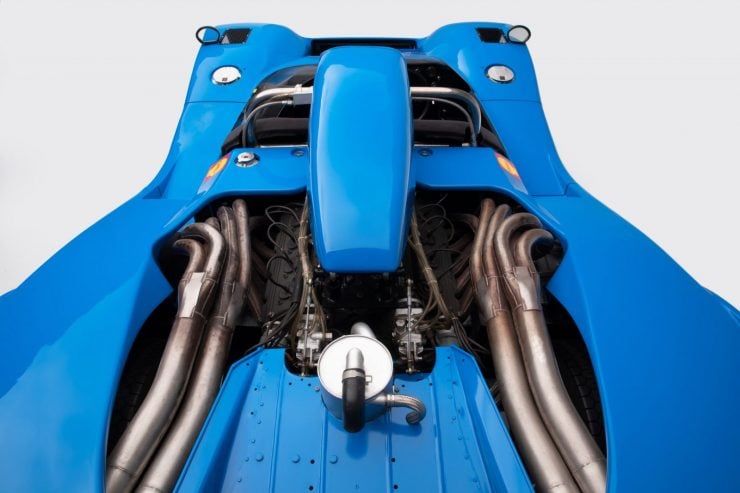
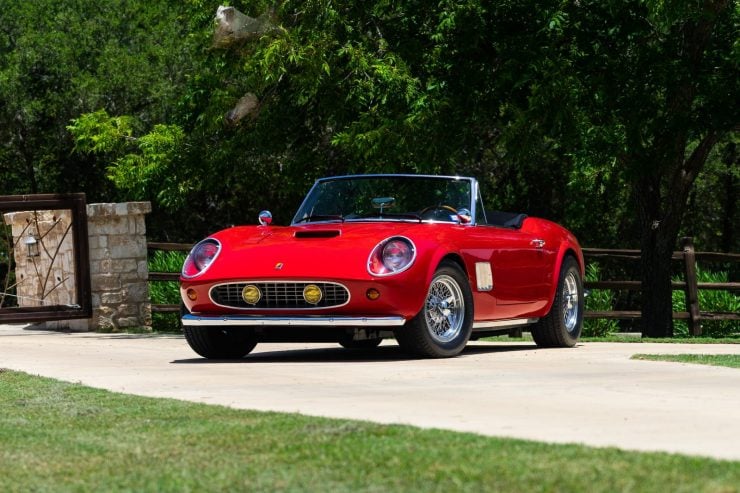
#6 – THE CAR USED IN FERRIS BUELLER’S DAY OFF IS FOR SALE
The car used in the seminal 1986 film Ferris Bueller’s Day Off is widely thought to be a 1961 Ferrari 250 GT California. This is because it looks an awful lot like one, and because it’s literally described in the film as such: “The 1961 Ferrari 250 GT California. Less than 100 were made. My father spent three years restoring this car. It is his love. It is his passion.”
Even though the prices on original examples of the Ferrari 250 GT California were multiple orders of magnitude less than they are today, they still weren’t cheap in 1986. The solution was to use a far less expensive American-made Modena GT Spyder California for almost all filming, and a real Ferrari for close-up shots.
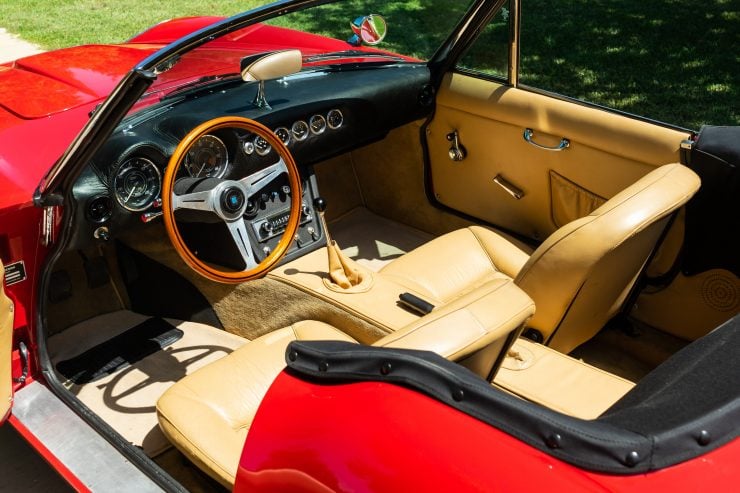
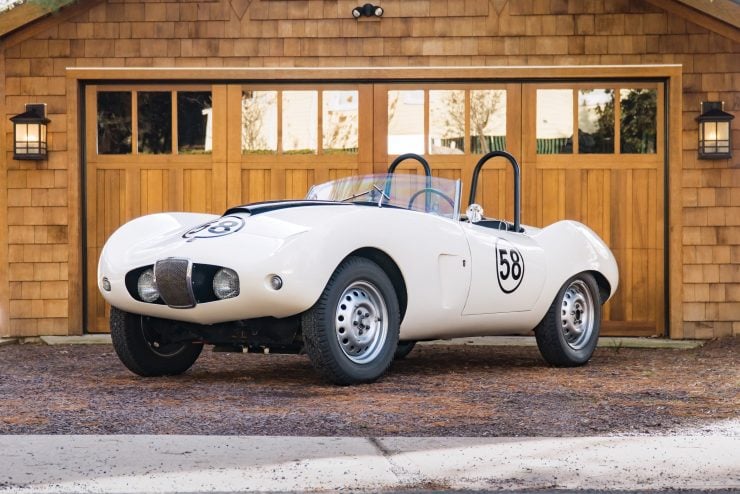
#5 – ORIGINAL WORKS RACER: 1954 ARNOLT-BRISTOL BOLIDE ROADSTER
The Arnolt-Bristol is an unusual car that owes its existence jointly to the Brits, Italians, and Americans. The post-WWII era was a golden age for cross-Atlantic automotive collaborations and the mighty little Arnolt-Bristol is (arguably) one of the prettiest of these collaboration cars.
Stanley H. “Wacky” Arnolt was an American industrialist who had earned his unusual nickname after arriving in Chicago in a 13 foot rowboat fitted with a Sea-Mite marine engine. It earned him a mention in a local Chicago newspaper, and it was the journalist who wrote the piece who first gave him the nickname that would follow him for the rest of his life.
Arnolt was anything but wacky in the traditional sense, he was an astute businessman and an avid amateur racing driver. He had brought the rights to the Sea-Mite marine engine and during WWII he earned a small fortune by building them for small military vessels.
In 1950 Arnolt set up a dealership in Chicago to sell British automobiles, mostly MGs, Rileys, and Morris Minors. He travelled to the Turin Auto Show where he met with Giovanni Bertone of the iconic Italian coachbuilder that bares his name. Arnolt had been drawn to the Bertone stand at the show as they were displaying their custom bodied MGs, and Arnolt fell in love on the spot.
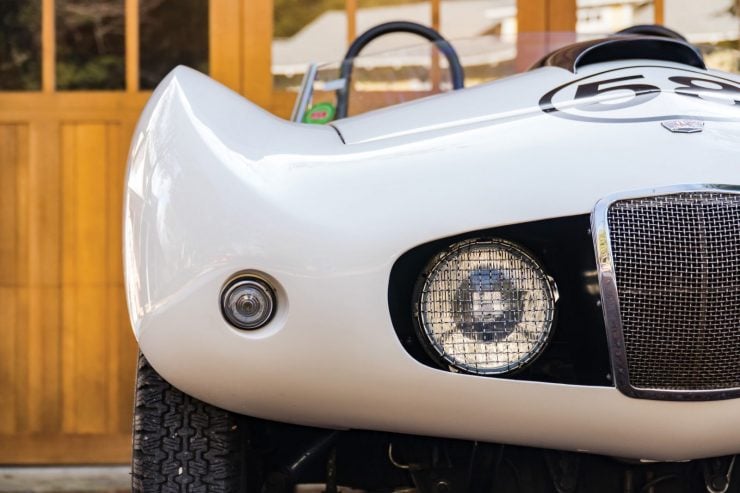
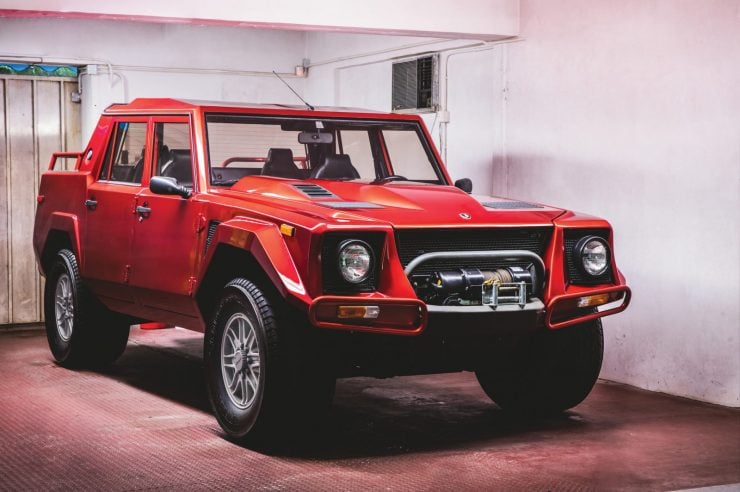
#4 – THE RAMBO LAMBO: 1991 LAMBORGHINI LM002 4×4
The Lamborghini LM002 was quickly dubbed the “Rambo Lambo” when it was unveiled to the public in 1986. Although very few realized it at the time, the LM002 wasn’t just an ostentatious flash in the pan.
Luxury SUVs would quickly become one of the fastest growing sectors in the global automotive marketplace – and Lamborghini had created one of the most extraordinary examples of this new genre almost by accident whilst bidding for a contract with the US Military.
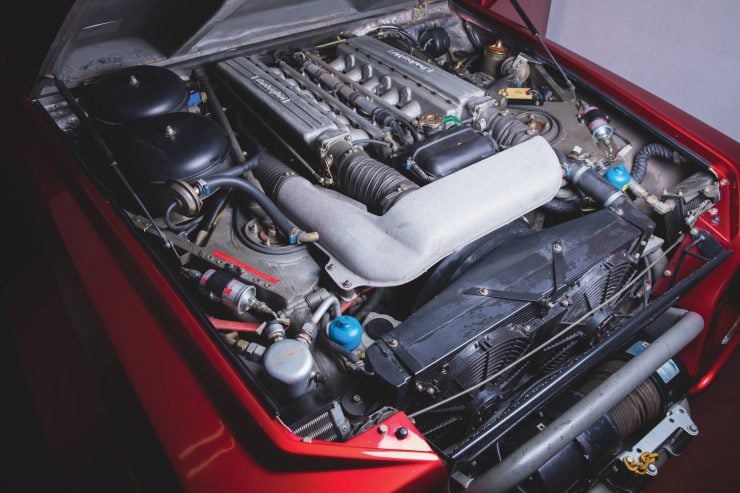
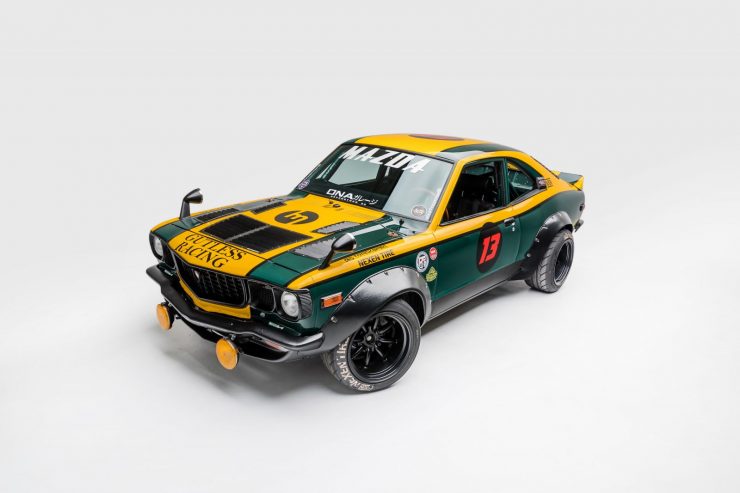
#3 – DNA GARAGE MAZDA RX-3 RACE CAR – 400 BHP TRIPLE ROTOR
The car you see here is any self-respecting Mazda-phile’s unicorn. A 1974 RX-3 with a built triple-rotor semi-peripheral port 20B producing 400 bhp. The engine was built by rotary specialists DNA Garage based in Santa Ana, California.
In order to lower weight as much as possible the interior has been completely stripped with all carpets, sound deadening, the dashboard, and rear seats removed. A custom roll cage constructed by RAD Industries has been fitted, along with a Racepak dash, wide fender flares, a subtle rear wing, and finally, it was given a distinctive green and yellow livery reminiscent of the iconic color scheme used by Japanese racing driver Yoshimi Katayama.
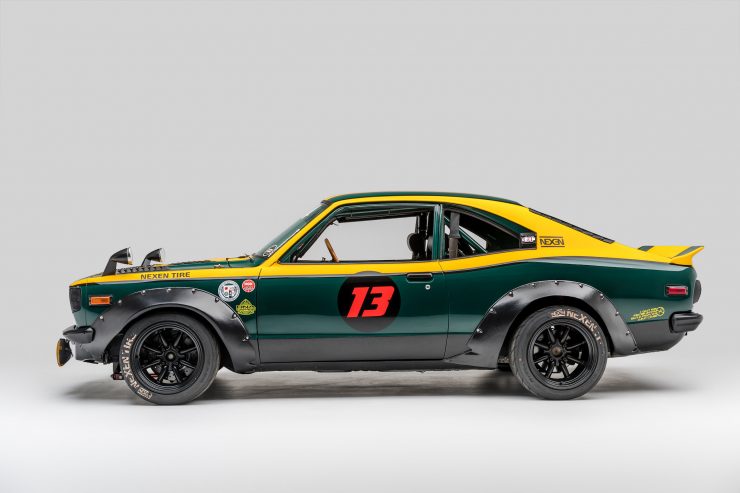
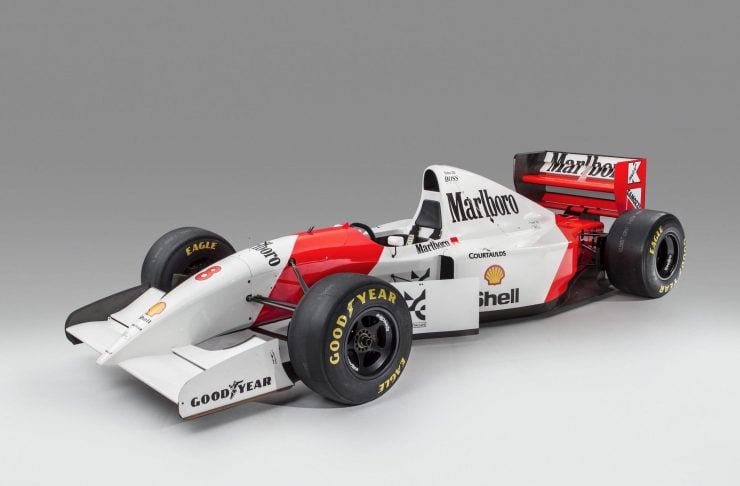
#2 – AYRTON SENNA’S ORIGINAL 1993 MCLAREN MP4/8 FORMULA 1 CAR
This McLaren MP4/8 was the car driven by Ayrton Senna to his record-setting 6th win at the Monaco Formula 1 Grand Prix, beating the previous record holder Graham Hill, and setting a record that would remain unbroken to the modern day.
The car that would give Ayrton Senna his final Monaco win is now due to return to the principality in 2018, and be sold on to a new owner. Impressively, the car is in full working order and ready for vintage motorsport competition.
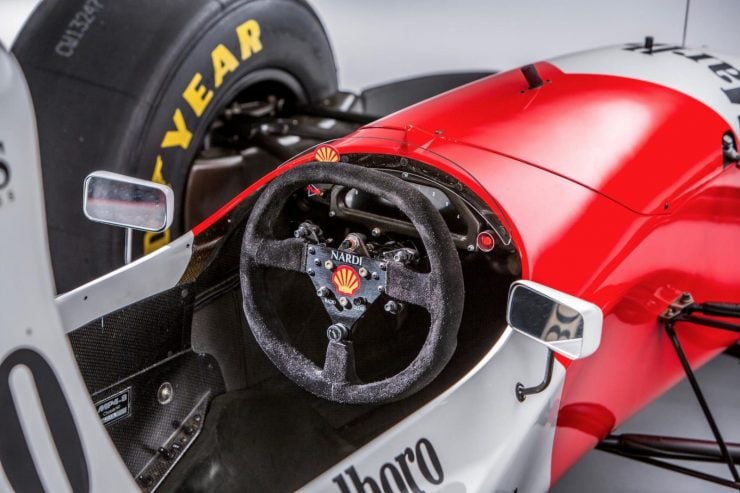
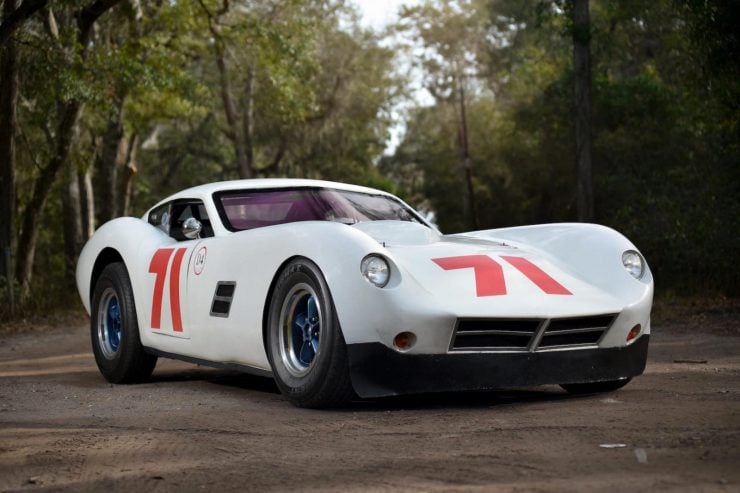
#1 – A RARE AMERICAN ICON – THE 500HP 1959 KELLISON J-4R V8 COUPE
Editor’s Note: This one was a surprise, we didn’t anticipate this car being quite as popular as it was. I think one of the reasons for its popularity is its unusual design and the fact it looks like it’s doing 150 mph while sitting still. The story behind the car is fascinating and well worth a read if you have a few minutes spare.
The Kellison J-4R was the brainchild of USAF pilot James Kellison, a man known for his exceptional intelligence, his deep love for cars, and his fascination with lightweight composites.
In the 1950s the latest and greatest composite was fiberglass, a material that was a precursor to modern composites like carbon fiber, and that offered excellent strength, low weight, and complete rust resistance that made it seem like a miracle material to car manufacturers.
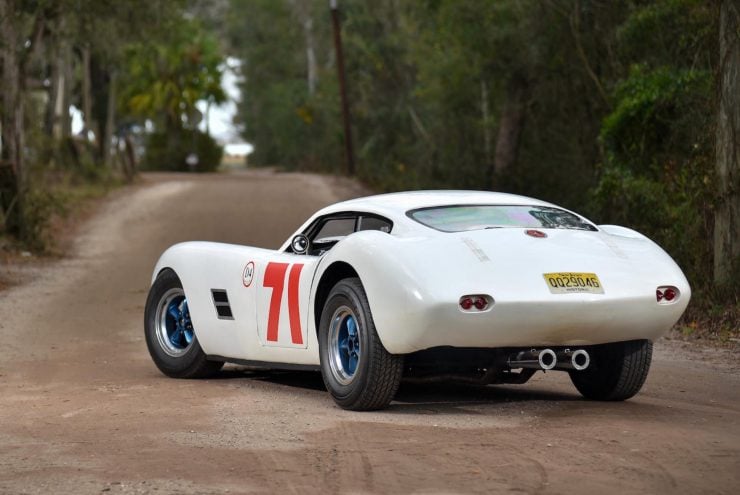

Articles that Ben has written have been covered on CNN, Popular Mechanics, Smithsonian Magazine, Road & Track Magazine, the official Pinterest blog, the official eBay Motors blog, BuzzFeed, Autoweek Magazine, Wired Magazine, Autoblog, Gear Patrol, Jalopnik, The Verge, and many more.
Silodrome was founded by Ben back in 2010, in the years since the site has grown to become a world leader in the alternative and vintage motoring sector, with well over a million monthly readers from around the world and many hundreds of thousands of followers on social media.

